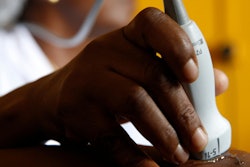
Industry "headwinds" -- such as supply-chain disruptions in China, rising inflation, and the war in Ukraine -- conspired to impact second-quarter financial results at Philips.
Overall sales for the company fell 7% after currency adjustment for the period (end-June 30). The decline was led by a drop of 30% for sales and orders in China, where lockdowns related to COVID-19 significantly affected business activity.
Revenues after currency adjustment fell 4% for the quarter in the company's Diagnosis & Treatment businesses, in which the bulk of Philips' activity in medical imaging takes place. Sales for the second quarter were 2.157 billion euros ($2.2 billion) for the most recent period, compared with sales of 2.117 billion euros ($2.16 billion) in the same quarter the year before.
The group's profitability also took a hit. Operating income was 112 million euros ($114 million), compared with 262 million euros ($268 million) in the second quarter of 2021. Income as a percentage of sales was 5.2%, compared with 12.4% in the year-ago quarter.
The decline was driven by shortages of electronic components, which drove down sales in the company's ultrasound and diagnostic imaging segments. On the positive side, revenues grew in enterprise diagnostic informatics and image-guided therapy.
On a geographic basis, China led a sales decline in the high single digits that was also felt in other growth geographic markets. Mature geographic markets posted a single-digit decline in the second quarter, after recording double-digit growth in the first quarter of 2021.



















